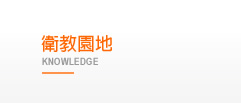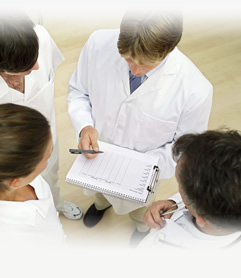and in cline in phosphorus in our blood, leading to higher secretion of parathyroid hormone and reduction of active vitamin D3, causing changes in bone synthesis and thus bone lesions.
※ What are the symptoms of renal osteodystrophy?Functions of our kidneys are:
1. To excrete waste and water from our body.
2. To keep balance of calcium, phosphorus, sodium, potassium, and other electrolyte level.
3. To secrete erythropoietin for red blood cells production.
4. To activate vitamin D3 --- to maintain bone density and health.
※ What is renal osteodystrophy?
The degeneration of kidneys can easily cause a decline calcium
The symptoms may include bone pain, osteoporosis, muscle weakness, bone fractures, abnormal calcification of blood vessels and tissues.
※ The imbalance of calcium and phosphorus in blood level would cause an increase of parathyroid hormone, leading to bone disorder. Will it also affect other organs of our body?
A: Yes!
1. The increase of parathyroid hormone will shorten the life span of red blood cells and cause anemia. It will also interact the medical effectiveness of erythropoietin injection.
2. Immunity would decline. Nerve conduction would turn abnormal.
3. The arteries may become stiffness, leading to cardiovascular disease.
4. Bone density may change, leading to fracture easily.
5. Wounds and cuts in our body are prone to calcification.
6. Itchy skin or pruritus.
※ How do I know my calcium and phosphorus are not in balance?
Blood tests will tell. Normal level of calcium ranged around at 8.9 ~ 10.3mg/dl and phosphorus at 2.4 ~ 4.7mg/dl.
※ How can we prevent renal osteodystrophy?
Two key points are:
1. Avoid phosphorus-rich foods to reduce the phosphorus intake. See Table (A) Magnifying glass for phosphorus-rich foods.
2. Take medicine (i.e. phosphate binders, which include antacid or calcium carbonate, calcium acetate) to reduce the absorption of phosphorus in food by the intestine. * Tips: Antacid or calcium carbonate should be taken with meals or snacks, so that phosphorus in food is bound with medicine before it is absorbed by intestinal tract.
Conclusion: When our kidneys function at 30% (normally 90% to 100%), we should start to adjust our meals for the intake of phosphorus and follow the doctor's orders to take phosphate binders to reduce the incidence of renal osteodystrophy caused by the chronic kidney disease.
Table (A) Magnifying glass for phosphorus-rich foods
Phosphorus is widespread in the nature. Most of the high-protein nutritional foods contain phosphorus. Phosphorus derived from animal and plant foods. Among them, meat, fish, eggs, dairy products, beans, and cereals are the main sources. Avoid excessive intake of phosphorus-rich foods, because no medication can fully process it.
編碼:5736-單張-英文-124-02
英文翻譯日期:2017年6月
依據:5736-單張-中文-296-04
中文修訂日期:2015年5月
|
|
H Eat little the following foods
|
W Avoid eating the following foods
|
|
Staple
|
Rice, bread, white toast
|
Oatmeal, barley, red beans, mung bean, lotus seeds
|
Brown rice, embryo rice, instant oatmeal
|
|
Meat and fish
|
Fresh meat, fish, pig blood, duck blood
|
Clams, oysters, shrimp
|
Squid, crab
|
|
Beans
|
Tofu pudding, tofu (skin), soy milk
|
Frozen tofu
|
Black beans, vegetarian ham, vegetarian chicken
|
|
Eggs
|
Egg white
|
Whole egg
|
Yolk
|
|
Dairy products
|
Fresh milk-
|
Cheese, Yakult, yogurt
|
Cream, butter, bacon, goat milk tablets
|
|
Processed foods
|
-
|
Floss, fish floss
|
Milkfish balls, sausages, Yan dumplings, pork balls
|
|
Snacks, nuts
|
-
|
-
|
Peanuts, melon seeds, water chestnuts,
vita yeast sugar, beans, cashew nuts, lactic acid
|
|
Beverage
|
-
|
-
|
Coke, SARS, soft drinks, tea, coffee
|
|
Seasoning
|
-
|
-
|
Barbeque sauce, sesame paste, oyster sauce
|
|
Health Food
|
-
|
-
|
Lecithin
|





